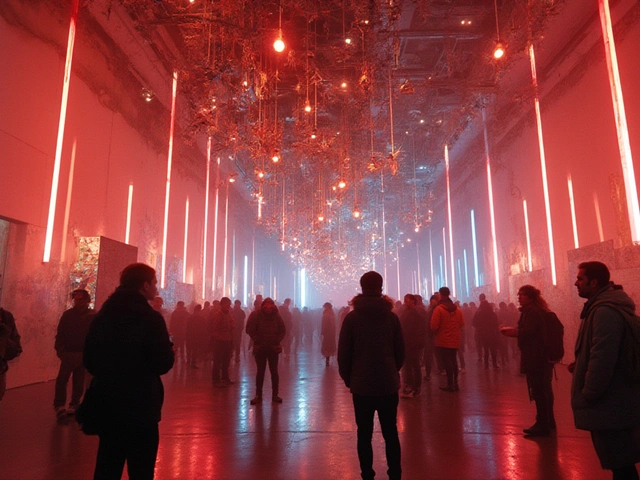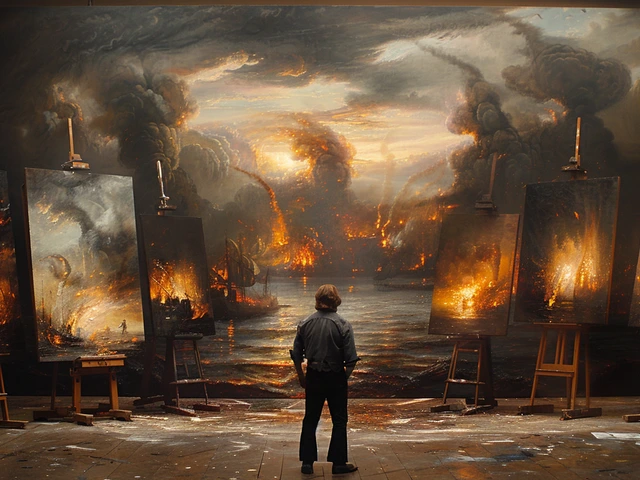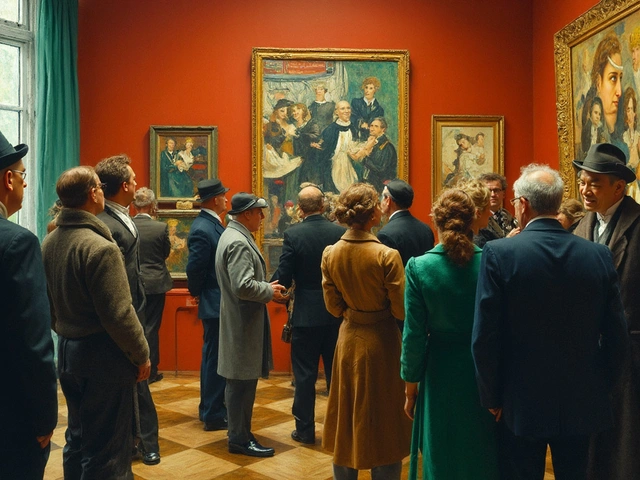Performance art is where creativity and expression collide in the most vivid way imaginable. It bridges the gap between art and artist, fostering a connection that isn't just seen but felt. This unique form of art dates back to the early 20th century, with roots intertwined in movements like Dadaism and Futurism.
The beauty of performance art lies in its boundless nature. It seamlessly integrates a range of art forms like theater, music, and visual arts, paving the way for powerful statements and transformative experiences. The fluidity of performance art means it is forever adapting, reflecting the vibrant and often tumultuous pulse of modern life.
- The Evolution of Performance Art
- Defining Characteristics of Performance Art
- The Role of the Audience
- Famous Performance Artworks and Artists
- Creating Impactful Performance Art
The Evolution of Performance Art
Performance art, at its core, stretches the boundaries of traditional art forms by employing the artist's own body as a tool for expression. Its origins can be traced back to the early 20th century, emerging as a rebellion against the static nature of conventional art. Movements like Dadaism and Surrealism played crucial roles in shaping this art form. These movements sought to disrupt the status quo through bizarre, unexpected performances that were focused on spontaneity and tapped into the subconscious. The famous Cabaret Voltaire in Zurich around 1916 is one iconic example where artists gathered to perform experimental works, challenging the conventional approaches of the time.
Fast forward to the 1960s and 70s, the term "performance art" began gaining prominence. This was a time when artists were heavily influenced by political and social changes sweeping across the globe. Artists like Yoko Ono and Marina Abramović began using their bodies to challenge ideas of identity, gender, and social norms. Abramović, for instance, became notable for her work "Rhythm 0" in 1974, which explored trust and the audience's role in the performance. During her piece, the audience was invited to use 72 objects on her body in any way they wished, which included benign items like feathers to more provocative ones like a pistol. This period marked a shift where performance art became an introspective tool, pushing the boundaries of bodily endurance and social commentary. "Performance art by its very nature is ephemeral," noted art critic Lucy Lippard, emphasizing the transient and evolving nature of the medium.
The evolution continues into the digital era, where technology and the internet have expanded the horizons of performance art. Social media platforms now enable artists to reach a global audience instantly, altering how performance art is experienced and consumed. Work by artists like Miranda July and Klaus Biesenbach reflect how the digital revolution intertwines with traditional performance art. Digital broadcasts and virtual performances have also become an arena for experimentation, allowing for the blending of virtual reality and interactive installations. This new phase suggests a democratization of the art form, as more people are exposed and have access to participate, either as artists or as an audience, in real time. This digital infusion into the art world has added layers of complexity and accessibility, making what once was a niche pursuit into something much more widespread and readily experienced by all.
Defining Characteristics of Performance Art
Performance art is a dazzling and multifaceted genre that transcends traditional boundaries of creative expression. It defies simple categorization, adhering less to conventions and more to the boundless imagination of the artist. At its core, performance art is characterized by live, ephemeral, and often interactive works that thrive on the presence of the artist and audience within a shared space. This immediacy underscores its distinct nature, as each performance is unique, with its significance amplified by temporal and spatial contexts.
Typically, performance art incorporates a diverse array of mediums, seamlessly weaving together music, movement, visual elements, and spoken word. It prioritizes the process over the final product, celebrating the journey of creation and communication. This form of art challenges the notion of permanence; unlike a painting or a sculpture, it is an impermanent act that lingers only in the memory of those who witness it. That said, the essence of performance art often lies in its conceptual depth, with artists using their bodies and voices as tools to articulate poignant messages that resonate on both personal and societal levels.
The spontaneity and unpredictability inherent in performance art pave the way for innovative experimentation. Oftentimes, it’s a medium for artists to address current themes and social issues, offering commentary on topics ranging from politics and identity to environmental concerns. Central to its ethos is the notion of connection; performance art compels interaction, urging the audience to engage actively, whether through physical involvement, emotional response, or intellectual dialogue. An illustrative example can be drawn from Marina Abramović's body of work, where her pieces frequently prompt introspection and emotional confrontation.
A unique aspect of performance art is its blur of the line between art and life. Artists may assume roles or personas, yet retain a fidelity to their authentic selves. This interplay between reality and representation invites introspection on what constitutes art. A seminal characteristic of performance art is its rejection of commercialization. Unlike other art forms, performance art appears intent on maintaining its independence from commodification, thriving in alternatives such as grassroots venues and spontaneous public settings. According to art historian RoseLee Goldberg, in her iconic work, "Performance Art: From Futurism to the Present," this art form is "as much a part of our cultural bloodstream as DNA."
"Performance art offers a unique opportunity to experience art in an entirely different way, transcending the one-dimensional to engage with the viewer in a dialogue," remarks Goldberg.
Understanding the defining characteristics of performance art adds layers to our appreciation of its role within the contemporary art sphere. This form of art continues to evolve, continually pushing the boundaries of what art can be, embodying a living, breathing testament to human creativity's limitless nature.
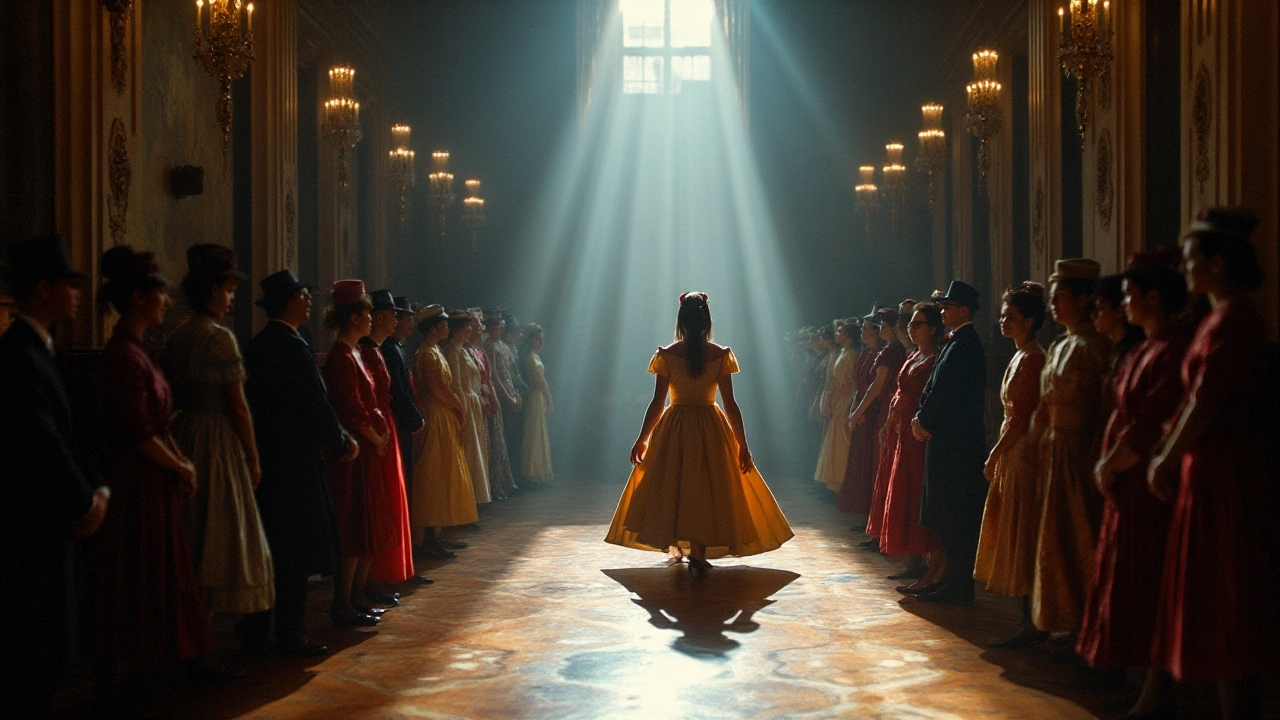
The Role of the Audience
In the vibrant world of performance art, the audience plays a pivotal role, transforming the art into an interactive spectacle that extends far beyond observation. Unlike in traditional art forms, where the spectator's interaction is often limited to mere viewing, performance art blurs the boundaries, inviting — or sometimes coercing — audience participation. This dynamic shift elevates the audience from passive observers to active participants, engaging with the piece in a way that influences and often dictates the direction and success of the performance.
One of the most intriguing aspects of performance art is the unpredictability brought by the audience. The presence of a live audience adds an element of spontaneity, as their reactions can ignite changes in the narrative, often taking the art to unplanned yet thrilling directions. Take, for instance, Marina Abramović's famous work, 'The Artist Is Present'. Audience members were invited to sit silently across from her, creating a powerful connection that varied with each participant. The silent exchanges resulted in emotional breakthroughs, tears, and personal epiphanies, none of which were scripted but were integral to the experience.
Marina Abramović once remarked, "The audience is like oxygen, without them, the piece barely breathes."
Engagement with the audience doesn't only alter the course of the performance but also challenges their perceptions and comfort zones. This interaction often ventures into uncomfortable territories, questioning societal norms and personal boundaries. It's this element of surprise and challenge that grants performance art a potent edge, making it a tool not just for artistic expression but for socio-political commentary. In many instances, particularly impactful performances have moved audiences to action, inciting discussions, debates, and sometimes even movements, showcasing the profound power of this art form to effect change.
Performance artists often design their works deliberately to elicit participation. This can range from simple interaction, like answering questions, to more complex involvement, such as performing tasks or making decisions that affect the piece's outcome. Such strategic involvement ensures the art remains a living, breathing entity, never static or predictable. For instance, in Yoko Ono's 'Cut Piece', audience members were invited to cut away pieces of her clothing, a stark exploration of vulnerability and control that played out through the viewers' direct actions.
The relationship between the artist and the audience in performance art is symbiotic. The energy, emotions, and reactions of the audience feed into the performer, often intensifying the performance itself. This dynamic creates a shared experience, a temporary but intense connection that is fleeting yet memorable for those involved. As audiences invest themselves emotionally and intellectually, they become co-creators, offering interpretations and insights that enrich the art.
Ultimately, the role of the audience in performance art is not to be underestimated. They are not mere witnesses but essential elements that contribute to the art's evolution and impact. This intricate relationship between performer and audience is what sets performance art apart, making it a continuously intriguing and powerful form of expression.
Famous Performance Artworks and Artists
Stepping into the world of performance art feels like venturing into an unpredictable realm of human expression. It's the space where boundaries are smudged and raw emotions are laid bare. Some artists have elevated this art form to legendary status through their riveting works. The world first glimpsed the potential of performance art when Marina Abramović dared to push personal and emotional limits. Often celebrated as the 'grandmother of performance art,' Abramović's most captivating piece, "The Artist is Present," took place at the Museum of Modern Art in New York. For 736 hours, she sat silent and still on a chair, allowing visitors to sit opposite her and share a moment of presence. It was an exploration of vulnerability and human connection on a scale rarely attempted before.
Another intriguing figure in contemporary art is Joseph Beuys, whose work consistently blurred the lines between art and life. Beuys' "How to Explain Pictures to a Dead Hare," where he spoke to a dead hare while covered in honey and gold leaf, challenged perceptions of understanding and communication within art. According to Beuys, "every man is an artist," a statement which underlined his belief in the creative potential of every individual. His art transcended traditional boundaries of artistic media, fusing sculpture, performance, and activism into compelling experiences that provoked thought and discussion.
Yoko Ono, an artist known as much for her avant-garde work as her role in the music world, captivated audiences with her "Cut Piece." In this provocative performance, Ono sat passively while spectators were invited to snip away her clothing with scissors. This interactive piece was a radical commentary on the power dynamics of consent and vulnerability, ideas that still resonate powerfully today.
Art is a way of survival, Ono once proclaimed, highlighting the urgency and depth resonant in her work.
In Australia, an artist like Mike Parr can be seen pushing the creative expression envelope. Known for his endurance-based works, Parr's performances often involve personal hardship and psychological struggle. His gripping 2002 performance, "For Water from the Mouth," explored themes of confinement and human endurance, leaving an indelible mark on the performance art scene. Globally renowned artists like Carolee Schneemann also paved the way for awareness and discussion through their art. Her piece "Interior Scroll" was a bold feminist stance, where she extracted a paper scroll from her vagina during the performance, reading aloud the text inscribed on it. Schneemann confronted the misogynistic tendencies of the art world and society, sparking dialogue that continues to inspire many today.
Each of these artists, through their daring and often controversial pieces, have embedded messages of resilience, vulnerability, and introspection within the art world. They blur lines between artist and spectator, transforming what might be a solitary concept into a shared experiential journey. So, whether it's Abramović's silent gaze or Ono's offering of herself, modern artists continuously redefine what art means and what it can achieve in the socio-cultural landscape.
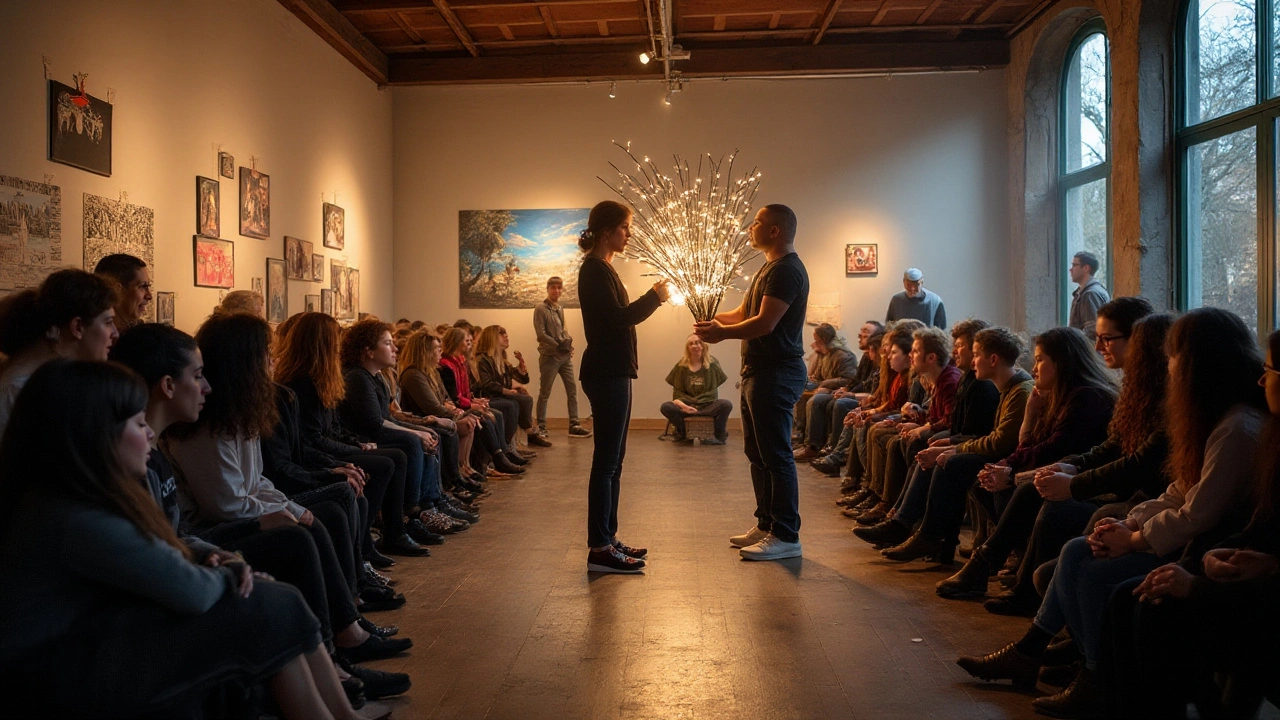
Creating Impactful Performance Art
Crafting performance art that leaves a lasting impression involves a synergy of creativity, innovation, and engagement. Artists must consider diverse aspects, from conceptual development to audience interaction. The first step often requires deep introspection and understanding of personal themes, cultural narratives, or societal issues that resonate deeply. By aligning with topics that truly touch the heart or provoke thought, artists set the foundation for a compelling piece. Exploring different mediums and integrating elements like music, dance, and visual arts can further enhance the richness and depth of the performance.
Engaging the audience is not merely about visual or auditory stimulation; it demands an emotional and sometimes physical connection. The role of the performer is to break down the barriers that typically separate the observer and the observed. Inviting audience participation is a powerful tool in performance art. Whether through direct interaction or subtle involvement, the audience becomes co-creators of the experience. This dynamic interaction blurs the lines of traditional art forms and allows for a unique shared experience. A successful performance often thrives on this interaction, leaving an indelible mark in the audience’s memory.
"Performance art resists commodification and can only fulfill itself through direct human interaction." – Amelia Jones, an art historian and critic.
The setting and environment significantly influence the impact of a performance piece. Artists should think beyond conventional spaces like galleries and theaters. Urban spaces, natural landscapes, or even virtual platforms offer myriad possibilities. Each location brings its own energy and challenges, often demanding adaptability and spontaneity from the performer. A well-chosen setting can amplify the message and reach of a performance, engaging audiences who may not frequent traditional art venues.
Crafting performance art is also about timing and pace. Artists need to be acutely aware of the audience’s attention span and the natural flow of their performance. This might involve choreographing movements meticulously or embracing improvisation to react to the audience's energy. Testing different iterations and collecting feedback can guide artists in finding the right balance between structure and spontaneity. Such refinement helps hone the performance’s impact, ensuring that every moment counts and resonates.
The incorporation of technology offers another layer of possibilities. From projection mapping to interactive installations, technology can transform a performance into a multisensory spectacle. Leveraging innovative tools can create immersive environments that captivate and transport the audience into distinct realms. Many modern artists are embracing new technologies to expand their artistic vocabulary, reaching audiences globally and pushing the boundaries of what performance art can achieve.
Ultimately, creating impactful performance art requires an unwavering commitment to authenticity and exploration. It challenges artists to delve into unknown territories, both externally and within themselves. By doing so, they invite audiences on a journey of discovery and introspection, contributing to the ever-evolving tapestry of contemporary art. As the art form continues to innovate and inspire, it remains a vital conduit for dialogue and reflection in our society.


